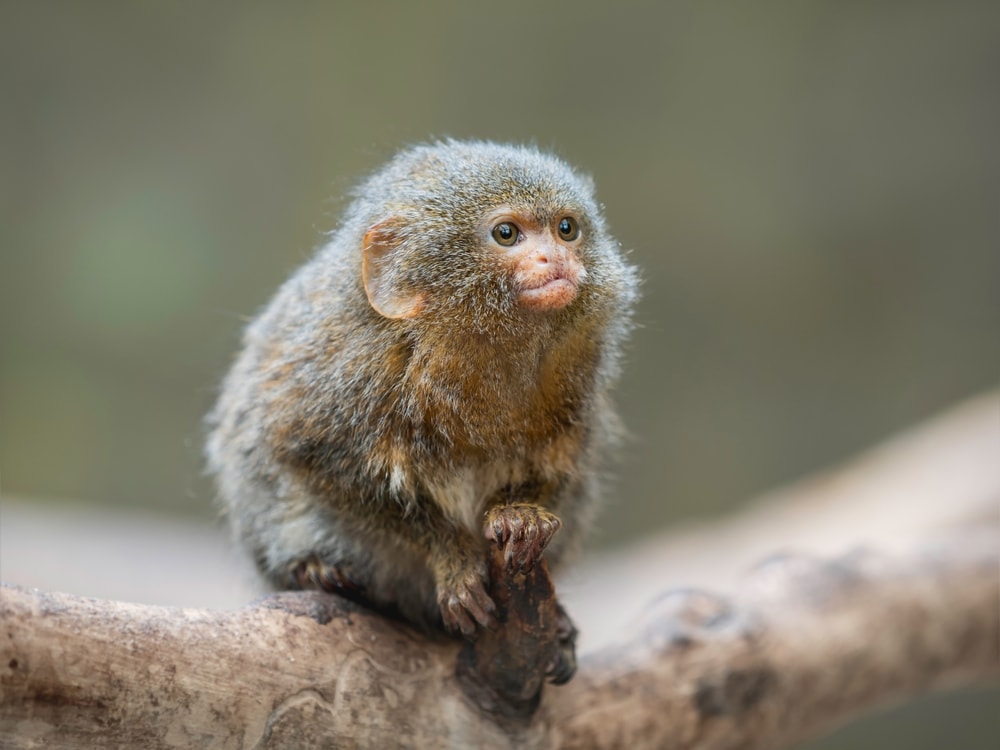Outforia Quicktake: Key Takeaways
- Pygmy marmosets, the world’s smallest monkeys, inhabit the rainforest canopy of South America. They are agile creatures that can navigate areas inaccessible to larger primates, ensuring their survival.
- These monkeys have a specialized diet primarily consisting of tree sap, which they obtain by gnawing holes in tree trunks, playing a crucial role in the ecosystem.
- Despite their small size, pygmy marmosets have notable physical characteristics including sharp claws for climbing and specialized dentition for feeding on tree gum.
- Pygmy marmosets are social creatures that live in close-knit family groups or troops. The family is usually led by a single dominant breeding pair that shares parental responsibilities.
- The species faces threats from habitat loss due to deforestation, predators, and the illegal pet trade. Climate change also poses a significant challenge to their survival.
Meet the pygmy marmoset, the world’s smallest monkey, which lives high in the rainforest canopy of South America. They thrive in the dense rainforests of the western Amazon Basin.
Their small size and agility allow them to navigate the treetops and reach areas inaccessible to larger primates, ensuring their survival in their unique habitat.
Although extremely tiny, pygmy marmosets are resourceful creatures. They have a specialized diet revolving around tree sap, which they obtain by gnawing holes in tree trunks.
This dietary preference makes them essential participants in the ecosystem, as their feeding habits facilitate the growth of fungi and provide nourishment to various insects.
In addition, they are known to eat small insects and fruits when they are available. But is that all there is to this adorable primate?
The Smallest Monkey in the World
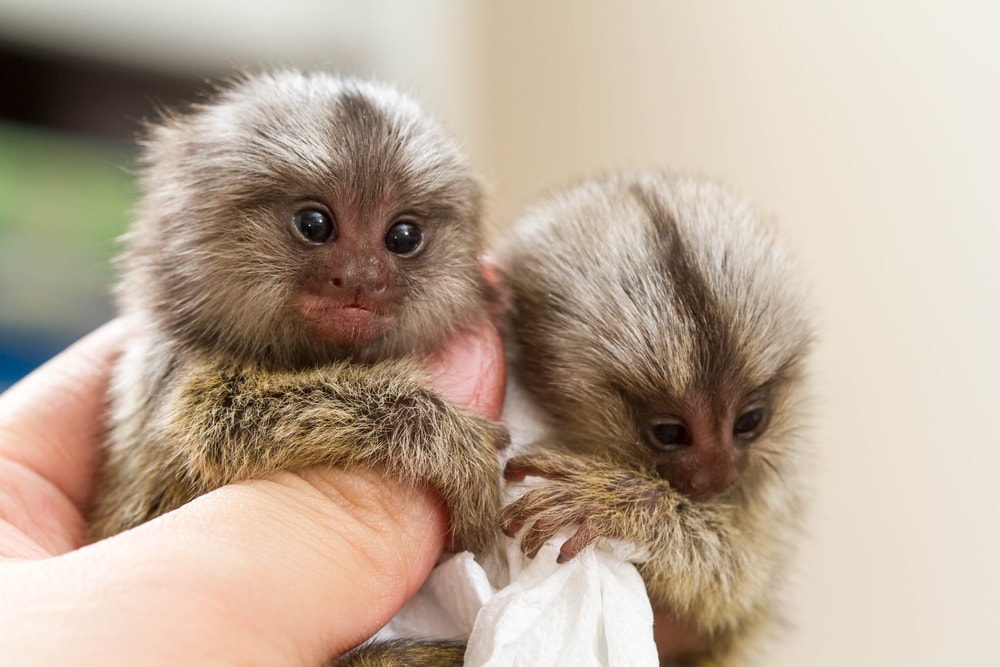
The pygmy marmoset is a fascinating creature and a true wonder of the animal kingdom. Hailing from the genus Cebuella, these New World monkeys are native to the rainforests of the western Amazon Basin in South America.
Within the primate family Callitrichidae, the pygmy marmoset is a member of the subfamily Callitrichinae and belongs to the species C. pygmaea.
Size and Unique Features
The pygmy marmoset holds the title of the smallest monkey on earth! With its squirrel-like movements, this tiny creature weighs just over 100 grams (3.5 oz) and measures a mere 117 to 152 mm (4.6 to 6.0 in) in head-body length.
The pygmy marmoset’s impressive tail, which can measure up to 229 mm (9.0 in), also plays a significant role in their mobility.
Despite its tiny stature, the pygmy marmoset boasts some remarkable physical attributes that set it apart from other monkeys.
One of the most noteworthy characteristics of any pygmy marmoset is its unique morphology. Aside from their compact size, these tiny monkeys have impressively sharp claws that enable them to cling to trees and climb skillfully.
Their specialized dentition allows them to feed on tree gum, making them gummivores living a rather specialized foraging lifestyle.
Habitat and Geography
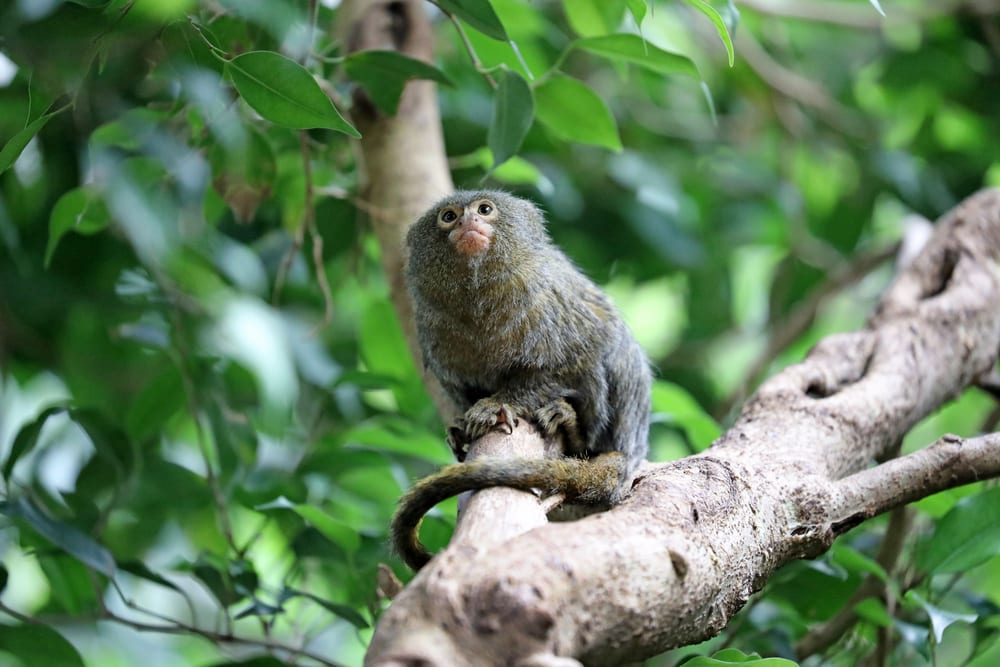
The pygmy marmoset is at home in the dense tropical rainforests of South America. These forests offer an ideal climate, providing shelter and sustenance.
Adapted to this specific environment characterized by high humidity and frequent rainfall, the pygmy marmoset thrives within these conditions. In these lush rainforests, you can find tree sap, a primary food source for the pygmy marmoset.
Additionally, the tree-scape offers protection from predators and the variety of insects that make up the rest of their diet. It is within the dense leaves of the tropical rainforest where these tiny primates are most comfortable.
Geographic Distribution
The pygmy marmoset’s geographical range covers parts of the Western Amazon Basin, including countries like Brazil, Colombia, Ecuador, Bolivia, and Peru.
It is within the river-edge forests and floodplains of these regions that these diminutive primates find their ideal habitats. You may find pygmy marmosets in the following regions:
- The Amazon Rainforest, the largest rainforest in the world
- The rivers and floodplains of Northern Bolivia
- The home range of the species extends across several South American countries
The pygmy marmoset thrives in different areas within the river-edge forests and floodplains across the Western Amazon Basin, as well as other parts of South America.
These regions serve as a perfect sanctuary for these tiny monkeys and provide ample resources for them to flourish.
You May Also Like: Meet The Green Tree Python: Verdant Beauty Of The Rainforest
Lifestyle and Habits
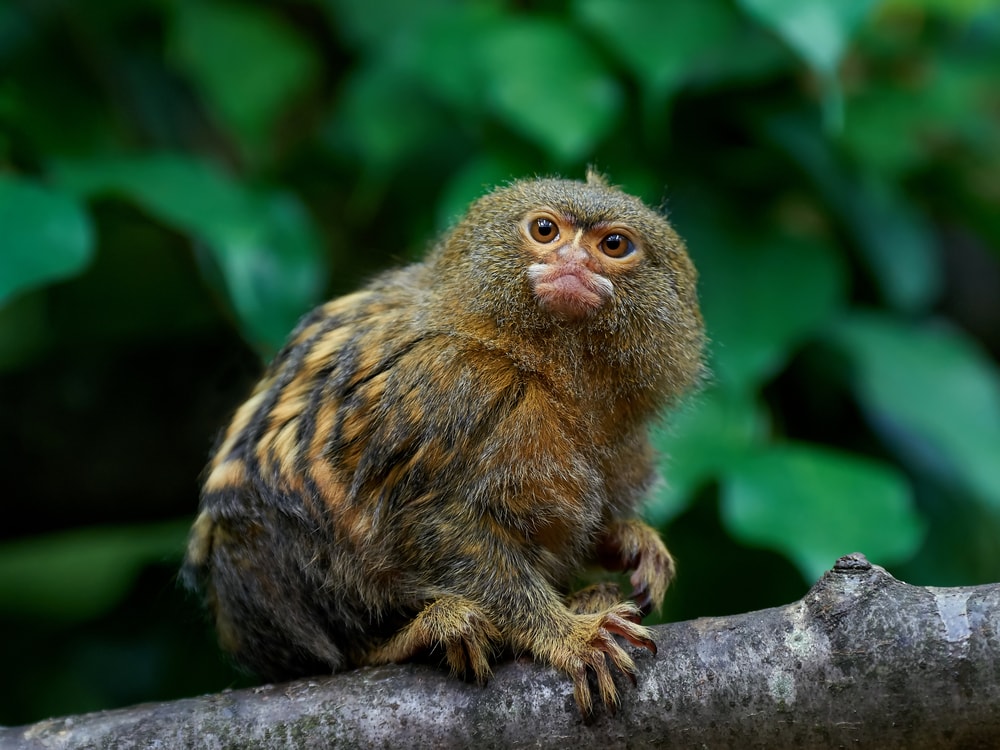
As the smallest monkey in the world, you might wonder how the pygmy marmoset spends its day.
Being an arboreal primate, it thrives in the understory of rainforests in South America’s Amazon Basin. Its small size allows it to maneuver through the dense foliage with ease.
Pygmy marmosets begin their day at sunrise, foraging for food. They mainly feed on tree gum, which they obtain by gouging small holes in the bark. Insects and fruit are also part of their diet, but they rely heavily on tree gum to meet their nutritional needs.
As nocturnal predators are active during the night, pygmy marmosets must remain vigilant and attentive to potential threats while foraging.
Aside from eating, much of their day is spent socially bonding. Pygmy marmosets engage in grooming sessions, which aid in the upkeep of their fur and reinforce social connections within the group.
They also communicate using a range of vocalizations that help coordinate group activities and alert others to the presence of predators or food sources.
Social Structure and Behavior
The social lives of pygmy marmosets revolve around close-knit family groups called troops, usually consisting of five to nine individuals.
The troop contains a single dominant breeding pair, typically with the dominant female being slightly heavier than other members. This pair remains together for life, engaging in monogamous pairing and sharing parental responsibilities.
When it comes to reproduction, the dominant female is the only one that mates and gives birth, ensuring the stability of the troop’s social structure.
Her offspring will stay within the troop and contribute to communal activities such as foraging, grooming, and vigilance against predators.
In addition to the use of vocal communication, pygmy marmosets display remarkable cooperation and teamwork.
When a new source of food is discovered, they often work together to access the resource. They also take turns watching for predators while other individuals feed.
Pygmy Marmoset’s Diet
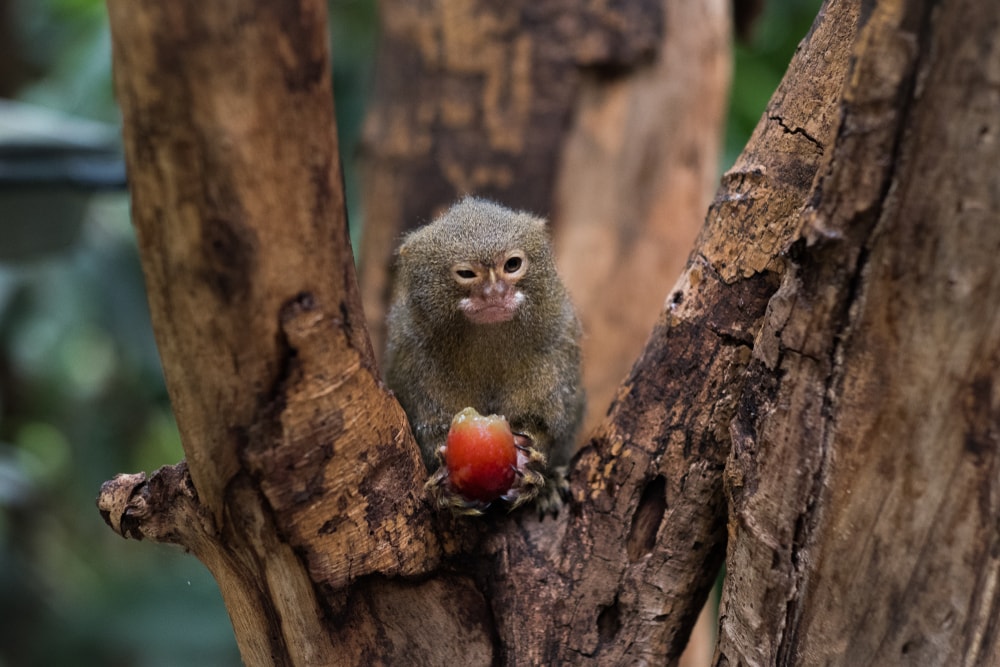
Pygmy marmosets have a specialized diet that makes them unique in the vast family of primates.
Their primary source of nutrition comes from tree sap, gum, and nectar. They use their sharp incisors to gouge the bark of trees and access the sap inside.
While their diet is primarily made up of plant-based sources, pygmy marmosets are also insectivores, consuming a variety of insects to supplement their nutritional needs.
Their agile tongues and quick reflexes allow them to capture insects like butterflies with ease.
Pygmy marmosets don’t rely heavily on fruits as a dietary staple. While they may occasionally consume fruits, their main focus remains the sap, gum, and insects they find in the rainforest.
As a primary sap consumer, the pygmy marmoset is an important part of the ecosystem, helping to maintain the balance of their environment.
Unfortunately, their unique dietary habits and small size have made them a target in the pet trade, where their specialized care requirements are often not met.
Mating and Family Life
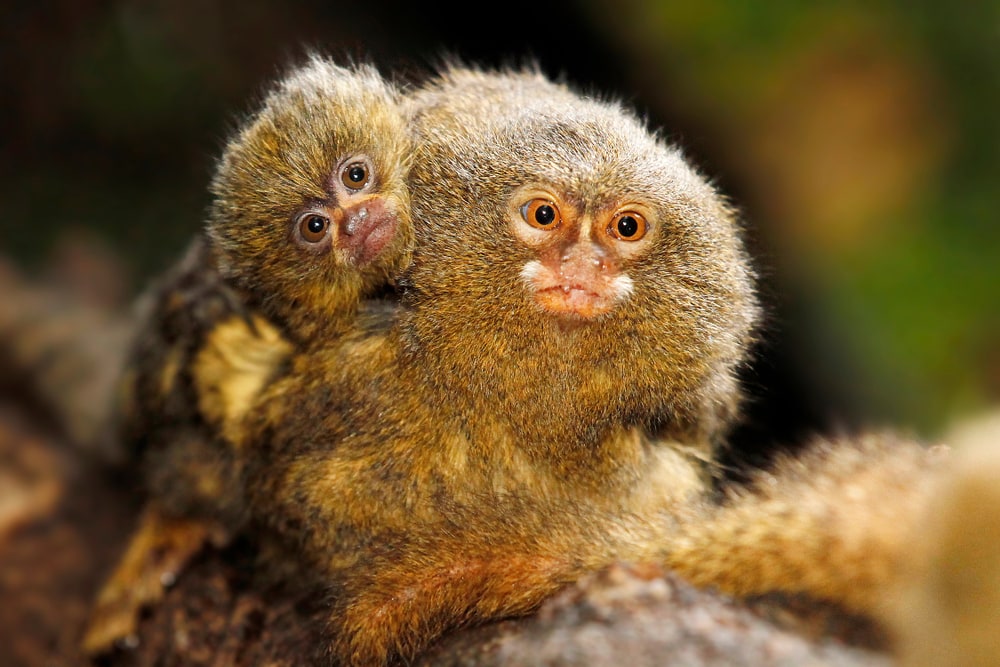
Pygmy marmosets usually have a monogamous mating system. The female goes through a gestation period of around 4.5 months, after which she gives birth.
Remarkably, pygmy marmosets often give birth to fraternal twins. As a mother, she provides essential care to her newborns, such as grooming, nursing, and keeping them warm.
The mother also spends time teaching her offspring the necessary skills for survival in their rainforest habitat, such as foraging for food and navigating their environment.
Role of the Father
In pygmy marmoset families, the father also plays a significant role in parental care. This is relatively unique among primates and highlights the cooperative nature of pygmy marmosets when it comes to raising their young.
The father’s duties tend to revolve around carrying and protecting the offspring. By doing so, he allows the mother to focus on nursing and grooming their young ones.
The father’s involvement is crucial to the survival and development of the offspring, as his constant care provides the safety and support they need to thrive.
You May Also Like: Scalloped Hammerhead Sharks: A Deep Dive Into These Endangered Ocean Predators
Population Status and Threats
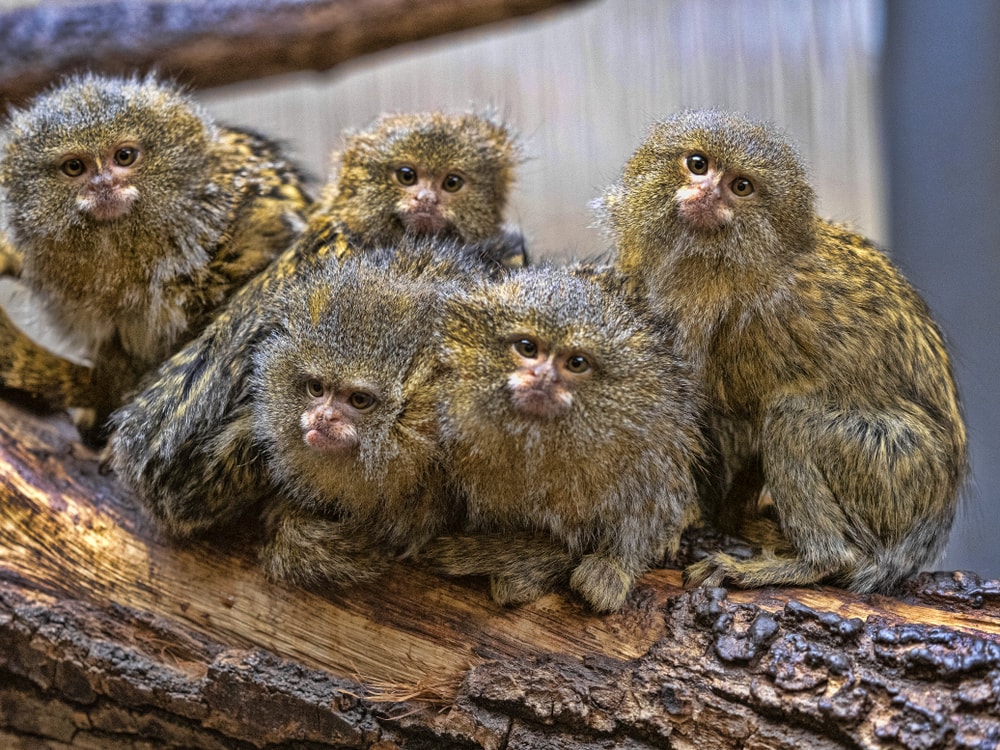
Habitat loss, mainly due to deforestation for agriculture and human settlement, is among the major threats that pygmy marmosets have to contend with.
Moreover, these primates also encounter various predators in their natural environment. Snakes in particular pose a considerable threat, as they are known to feed on these small monkeys.
Ecological Niche
Besides being adorable creatures, pygmy marmosets play a vital role in their ecosystem. These monkeys primarily feed on tree gum and sap, making them gumivorous specialists.
The western pygmy marmoset (Cebuella pygmaea) is a similar species belonging to the same genus of the New World monkeys. Both species have a significant impact on their rainforest ecosystems, ensuring a balance within their habitat.
As gumivorous specialists, pygmy marmosets contribute to the dispersal of plant species in the rainforest by assisting the plants in distributing their seeds.
Additionally, by consuming tree gums and sap, they help maintain tree health in their area. In turn, these monkeys become prey for predators, providing an essential food source for the larger creatures in the ecosystem.
Despite not being listed as endangered, the pygmy marmoset’s conservation status is of concern due to the ongoing challenges they face from habitat loss, predators, and climate change.
Threats to the Pygmy Marmoset
In Ecuador, research conducted since 1996 on eight populations of pygmy marmosets suggests that they should be included in the list of vulnerable species.
Deforestation and habitat fragmentation must be mitigated to secure their source of food and provide safe spaces for breeding and raising offspring.
Pygmy marmosets are also impacted by the effects of flooding, which endangers their habitat.
As climate change accelerates, these small primates will face additional challenges, particularly if their already limited habitat becomes further endangered by extreme weather events.
Another pressing concern for pygmy marmosets is the illegal pet trade. These adorable creatures may be appealing as pets, but their unique needs and social structures are incompatible with domestic life.
Fun Facts about the Pygmy Marmoset
Pygmy marmosets are the smallest monkeys in the world
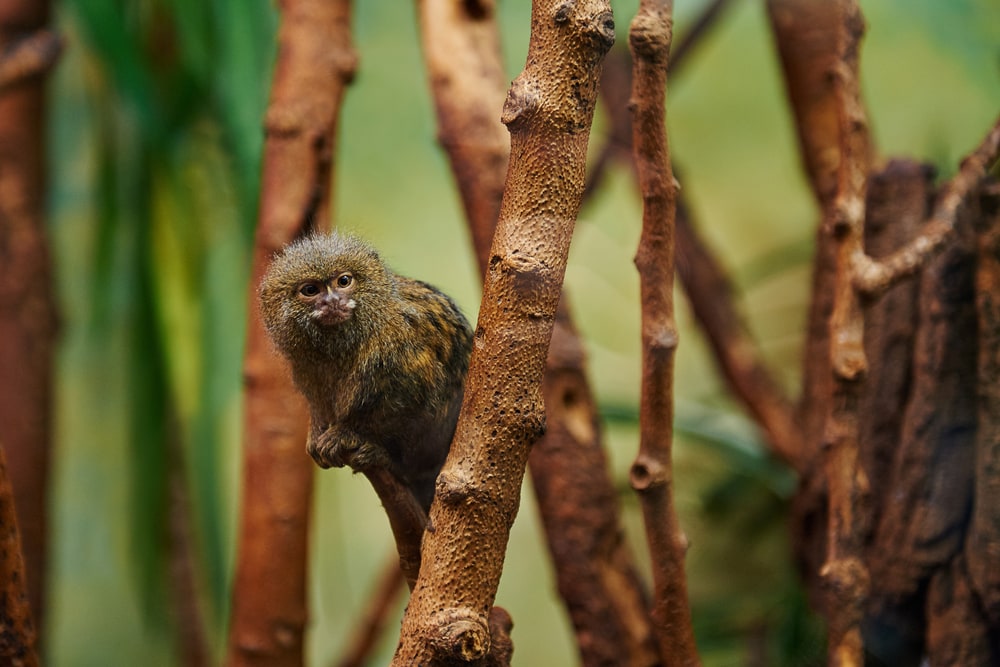
Pygmy marmosets are among the smallest primates and are part of the New World monkey group. They are commonly known as finger monkeys due to their tiny size.
These tiny primates measure just 4-6 inches (10-15 cm) in length and weigh approximately 100 grams, making them the smallest true monkeys in the world.
Pygmy marmosets have short lives
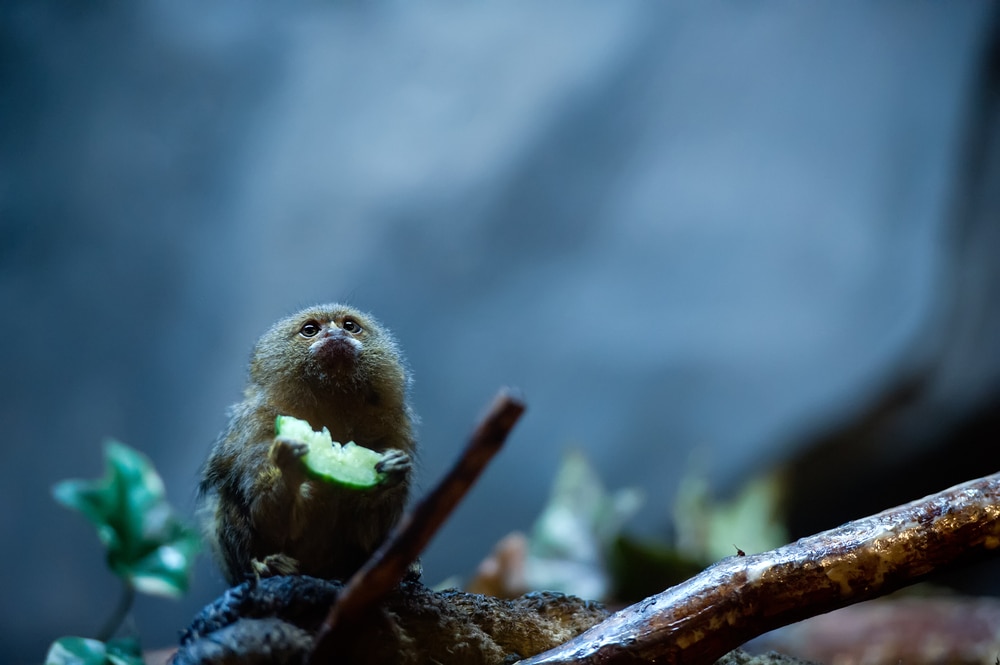
When properly cared for, these little creatures can live up to 12 years in captivity. However, life expectancy might be shorter in the wild due to various threats and challenges.
Pygmy marmosets use their teeth to drink tree sap
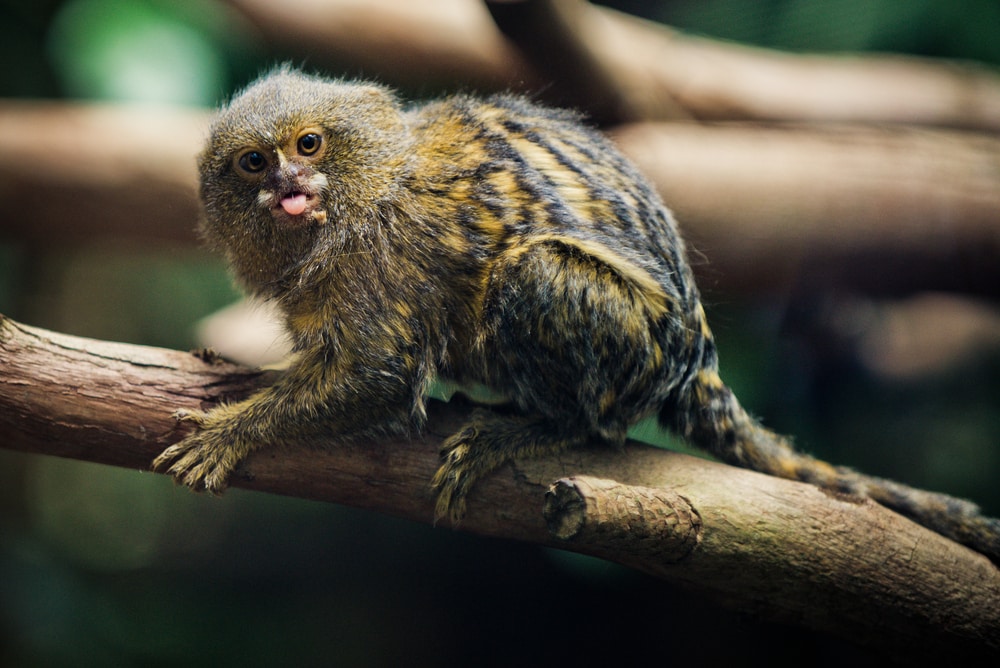
You might be wondering what these small monkeys consume to sustain themselves. Their primary prey includes tree sap, gums, and resins, particularly from trees that produce latex. Pygmy marmosets use their specially evolved, sharp teeth to gouge into tree trunks, causing the sap to flow out.
Pygmy marmosets are great at scampering
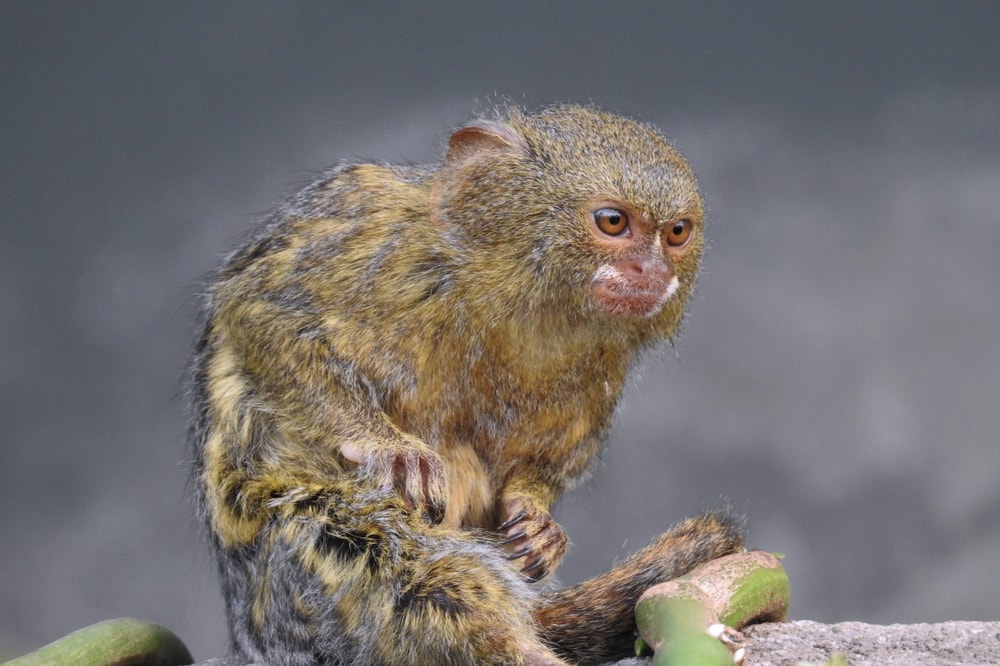
Pygmy marmosets’ ability to scamper up and down trees is remarkable. They confidently navigate the rainforest using their long tails for balance and their sharp claw-like nails, called “ungulae,” for a firm grip on tree trunks and branches.
There are two types of pygmy marmosets
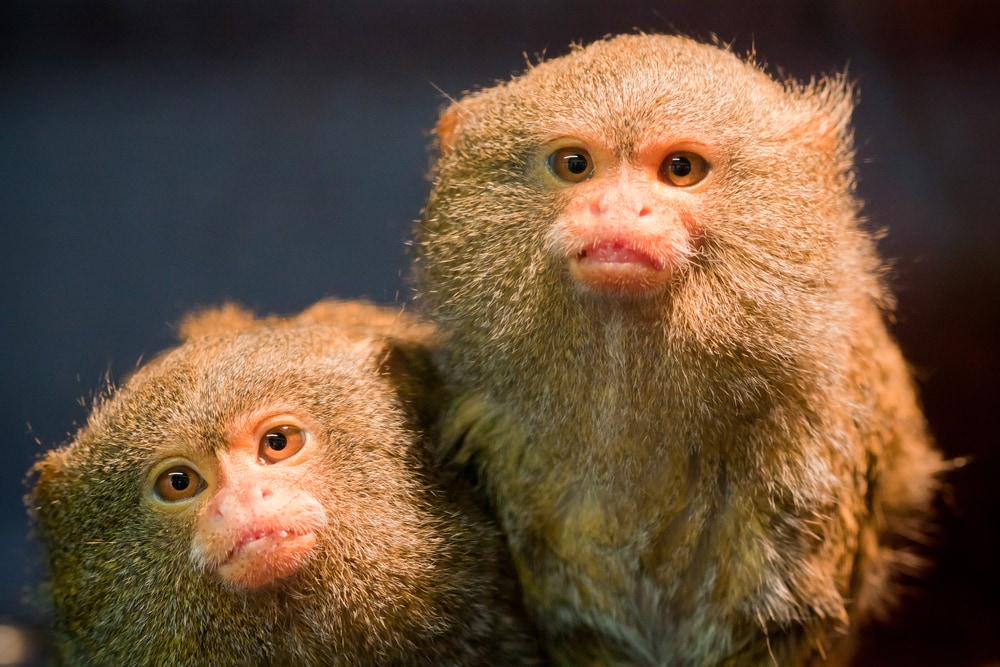
There are two subspecies of pygmy marmosets: Cebuella pygmaea and Cebuella niveiventris, both uniquely adapted to their rainforest environment and sharing the same fascinating traits.
You May Also Like: The Remarkable Coconut Octopus: Intelligence In The Depths
Pygmy Marmoset Frequently Asked Questions
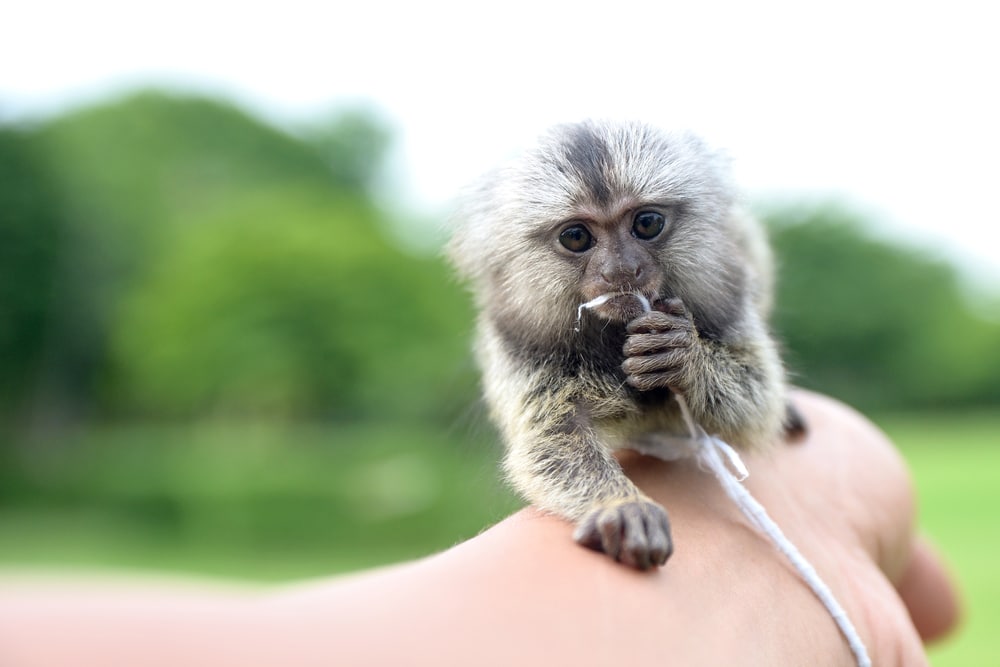
What do pygmy marmosets eat?
Pygmy marmosets primarily consume tree sap, which makes up the majority of their diet. However, they also eat fruit, spiders, and insects to balance their nutritional needs.
When feeding on tree sap, they use their specialized teeth to gnaw small holes in tree bark, allowing the sap to flow to the surface.
Where do pygmy marmosets live?
These tiny primates inhabit the outskirts of tropical rainforests in South America. They can be found in countries such as Brazil, Colombia, Ecuador, and Peru.
Pygmy marmosets prefer dense vegetation near rivers or streams and are well-adapted to living in trees, where they can easily move through branches and avoid predators.
How do pygmy marmosets adapt to their environment?
Being the smallest monkey in the world, pygmy marmosets have developed numerous adaptations to thrive in their environment.
With their diminutive size and lightweight bodies, they can easily cling to and move through the tree branches. Their sharp teeth help them gnaw tree bark to extract sap, which is their primary food source.
Additionally, their incredible agility and keen eyesight enable them to avoid predators and find food in the dense canopy of the rainforest.
What are the main predators of pygmy marmosets?
Predators of pygmy marmosets include various bird species, such as hawks and eagles, as well as snakes and small mammalian carnivores, like the ocelot.
Due to their small size and arboreal lifestyle, they are also vulnerable to predation by larger monkeys and other tree-dwelling predators.
To avoid predation, pygmy marmosets often stay within the safety of dense vegetation and use their agility to quickly escape any threats.



